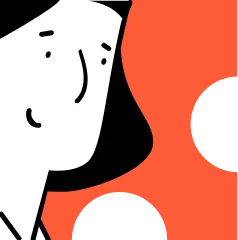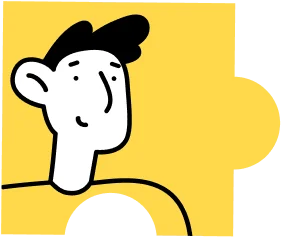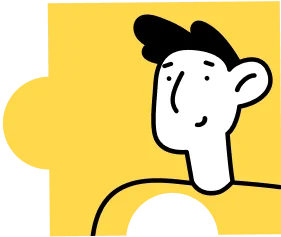How to Tease a Product without Overselling—But Still Leave Them Obsessed
%20(1).webp)
Product teasers are like flirting—subtle, intriguing, and just enough to keep them thinking about you long after you’ve left the room. But too many brands’ teasers are like bad pickup lines: way too obvious, painfully desperate, and straight-up annoying.
Overselling makes people cringe. But underselling doesn’t help either. It’s like sitting in the corner hoping someone might notice you exist.
The truth is, 95% of new consumer products flop—not because they suck, but because nobody cared enough to pay attention. If you’re not teasing right, you’re either a punchline or invisible. Neither gets you sales.
So, how do you make your audience obsessed without sounding like a desperate infomercial? Stick around.
By the end of this, you’ll know how to tease your product so well, they’ll be begging for more. (And unlike the Galaxy Note 7, no one’s getting burned.)
The Fine Art of Teasing: Why Less Is So Much More
You’d think spilling all the juicy details about your product would get people excited, right? Wrong.
Look, people don’t crave what’s shoved in their faces—they crave what’s just out of reach.
This is called the Information Gap Theory—when people know something but not everything, their brains itch to close the gap. But if you give it all away, that itch disappears faster than your budget after a bad campaign.
.webp)
Case in point: Coca-Cola Blak.
Yeah, that thing. “It’s Coke with coffee!” Cool. And? No mystery. No buzz. No one cared. It was dead on arrival and yanked off shelves in under two years.
Now compare that to Apple. They drop a cryptic invite with a shadowy image, and suddenly the internet loses its mind speculating over a rectangle. And when they finally show it, people are lining up like it’s the second coming of sliced bread. That’s the power of creating product hype without overselling.
The lesson here is… Tease, don’t tell. Keep your audience guessing, let them want more, and you’ll be generating buzz for new products without sounding like a desperate door-to-door salesman. Because in the end, less is more.
Overselling Is the Fastest Route to Nowhere
1. Don’t Overhype—Unless You Enjoy Public Humiliation
Amazon’s Fire Phone was supposed to “change everything.” You know what it did change?
Amazon’s ability to pretend they always win. After hyping it as the next big thing, reality hit hard—a $170 million write-down. Turns out, no one wanted a clunky, overpriced phone with a gimmicky 3D display that barely worked. When the hype doesn’t match the product, the market shrugs and laughs.
%20(1).webp)
Overhyping doesn’t just make your product look bad—it makes you look clueless. And once your credibility’s gone? Good luck getting it back.
2. Don’t Be Vague Just for the Sake of It
Teasing is an art. But being so vague that people have no clue what you’re selling is just lazy. Sure, mystery can build interest, but if your audience feels like they’re being strung along, they’ll bounce faster than a kid on a sugar high.
Over 50% of consumers say they’re frustrated by teasers that feel like smoke and mirrors. If your marketing teaser campaigns are all buildup and zero payoff, people won’t stick around to see the punchline. You need to give them just enough to stay curious—but not so little that they stop caring.
3. Don’t Ignore Your Audience’s Actual Desires
Here’s the harsh truth: Your product isn’t as special as you think it is—unless your audience says it is.
Seth Godin nailed it: "Don't find customers for your products, find products for your customers."
You can have the slickest, most creative teaser on the planet, but if it doesn’t hit what your audience actually wants, it’s DOA.
Remember Google Glass?
Cool tech. Zero real-world demand. It flopped harder than a bad stand-up routine.
Your teaser needs to tap into real desires, not just what you think is cool. Miss that, and your product launch will be more forgettable than last year’s viral meme.
Overselling is a fast track to nowhere. So, tease smart, respect your audience’s intelligence, and let the product earn the hype.
How to Tease Without Being That Annoying Friend
Let’s get one thing straight here: teasing isn’t about being vague for the sake of it. It’s not about dropping random cryptic hints and hoping your audience magically cares. It’s about precision.
Hit the sweet spot between intrigue and information, and you’ll have people obsessing over your product before it even exists.
Miss it?
You’ll be background noise.
.webp)
1. Tell a Story (Without Spoiling the Ending)
You don’t need to scream, “THIS IS THE BEST PRODUCT EVER”—because that’s exactly what people expect you to say. And when you sound like everyone else, you get ignored like yesterday’s spam folder.
Take Samsung’s Galaxy S6 Edge. They didn’t plaster every ad with boring specs or scream about curved glass. Nope. They let cryptic, sleek visuals do the talking. No over-explaining. No hard sell. Just enough mystery to get people whispering. The result was over 20 million YouTube views before the product even hit the shelves.
Lesson: Stop talking your product to death. Drop hints. Let people want to know more. That’s the foundation of effective teaser campaigns.
2. Leverage Social Proof Before the Product Even Launches
Want to know why the Xion CyberX eBike sold over $800,000 on launch day?
It’s because they pulled in 23,000 email subscribers before the bike even dropped. It wasn’t because of flashy ads or over-the-top promises.
How?
They made their audience feel like insiders. They shared sneak peeks, real-user testimonials, and behind-the-scenes content that made people feel like they were part of the launch—not just watching from the sidelines.
Lesson: Teasers aren’t just for the product—they’re for the people. Show them others are excited, and they’ll follow the crowd. That’s pre-launch marketing done right.
3. Use the Scarcity Principle Like Your Sales Depend on It (Because They Do)
Nothing gets people foaming at the mouth like limited access. It’s basic psychology—if something’s hard to get, people want it more. You don’t have to invent a fake shortage (toilet paper panic of 2020), but you do need to create urgency.
Here’s proof:
Think about every Nike drop that sells out in minutes. It’s not just about the product—it’s about the fear of missing out. And yes, FOMO is still alive and kicking.
Brian Lawley said it best: "After the launch phase, your product is old news. Take advantage of the opportunity to generate interest when your product is new."
Lesson: Don’t wait until launch day to get people hyped. Use teaser advertising techniques to make your product feel like a once-in-a-lifetime opportunity.
Product Launch Fails (And What You Can Learn from Them)
The road to product glory is littered with billion-dollar trainwrecks. If you think a big budget and a flashy teaser guarantee success, these disasters are here to prove you painfully wrong.
Let’s dig up some corporate skeletons and see what they should’ve done differently.
Case Study #1: Samsung Galaxy Note 7 – When Speed Kills (Literally)
Samsung was so desperate to beat Apple to market, they skipped a tiny detail: making sure their phones didn’t explode. The Galaxy Note 7 was hyped as the next big thing, but instead of dominating the smartphone game, it became a literal fire hazard. Phones were catching fire on planes, in people’s pockets, and even in bed.
The result was a $19 billion loss, a worldwide recall, and a PR disaster that made Samsung the butt of every tech joke.
The Lesson: Rushing a launch to outpace the competition is a gamble with your brand’s reputation. No amount of flashy product launch strategies can save you if the product itself is a ticking time bomb. Test. Then test again. Or risk becoming a cautionary tale.
Case Study #2: HP TouchPad – The Tablet Nobody Asked For
HP thought they could waltz into the tablet market and dethrone the iPad. Instead, they created the TouchPad, a tablet so forgettable that HP yanked it from shelves in just 48 days.
Why?
Because no one knew—or cared—why it existed. The marketing was bland, the software clunky, and the product had zero value proposition. It was like showing up to a party no one invited you to—and then realizing you brought the wrong dish.
The Lesson: You can’t slap together a product, throw a weak teaser at the wall, and hope it sticks. Effective teaser campaigns start with a clear message: Why should anyone care?
If you can’t answer that, don’t expect your audience to.
What a Perfect Teaser Looks Like: Step-by-Step Guide
Anyone can slap together a teaser. But if you want to stop people in their tracks, you need more than flashy graphics and empty buzzwords. You need a formula that hooks, intrigues, and leaves them desperate for more.
Here’s how you craft a teaser that dominates.
Step 1: Know Your Audience Inside Out (Because Guessing Is for Amateurs)
If you don’t know what makes your audience tick, you might as well toss your teaser into the void. Vague assumptions will get you ignored faster than a robocall during dinner.
Don’t Assume—Know. Use surveys, social media stalking (yes, stalking), and dig through customer feedback like your product depends on it—because it does.
When Coca-Cola Blak launched their coffee-infused soda, they assumed people wanted it. Unfortunately, they didn’t. The product tanked because Coke didn’t listen—they told.
Step 2: Craft a Narrative That Hooks (But Leave ‘Em Hanging)
Teasers aren’t about being cryptic for the sake of it. They’re about dropping just enough info to make your audience’s curiosity itch—without scratching it.
Be Specific Enough to Intrigue, Vague Enough to Tempt.
Samsung nailed this with their Galaxy S6 Edge teaser—cryptic visuals, sleek designs, and zero over-explaining..
Step 3: Spread It Everywhere (Yes, Everywhere)
If your teaser is only living on Instagram, congrats—you’ve limited yourself to one corner of the internet. Real teasers saturate every channel.
- Email Campaigns: Send sneak peeks to your subscribers. Make them feel like insiders, not just inbox clutter.
- Influencer Hype: Get people who actually matter in your niche to whisper about your product. Not influencers who promote protein shakes one day and car insurance the next.
%20(1).webp)
Step 4: Use Scarcity Like Your Life Depends on It
Want people to want what you’ve got? Make it scarce. Humans are wired to crave what feels exclusive or fleeting.
- Limited Pre-Orders: Give early birds first access. Make it crystal clear this is a one-time shot.
- Exclusive Drops: Think about Nike. Their limited releases don’t just sell out—they spark riots.
Step 5: Track, Tweak, Repeat (Because No One Gets It Right the First Time)
The first teaser isn’t always the golden one. Track your metrics—click-through rates, engagement, pre-orders. If something’s flatlining, pivot before your whole campaign crashes.
Data Is Your Friend: Watch how your audience responds. Are they clicking? Sharing? Ignoring? Adjust accordingly.
Even the best pre-release marketing tactics need refinement. The brands that succeed don’t just launch—they adapt.
Tease Smart, Launch Big, and Leave Them Begging for More
Teasing isn’t about shouting the loudest—it’s about hitting the right nerve. A sharp, well-timed teaser sparks obsession. The difference between a product that flops and one that sells out in minutes is not always the product itself—it’s how you introduce it.
You’ve got the pre-release marketing tactics and product announcement ideas in your arsenal. Now, use them to build a buzz that sticks. Tease smart, launch big, and watch your audience demand more.
Ready to make them crave what you’re selling? We’ve got your back—without the oversell.












Heading 1
Heading 2
Heading 3
Heading 4
Heading 5
Heading 6
Lorem ipsum dolor sit amet, consectetur adipiscing elit, sed do eiusmod tempor incididunt ut labore et dolore magna aliqua. Ut enim ad minim veniam, quis nostrud exercitation ullamco laboris nisi ut aliquip ex ea commodo consequat. Duis aute irure dolor in reprehenderit in voluptate velit esse cillum dolore eu fugiat nulla pariatur.
Block quote
Ordered list

- Item 1
- Item 2
- Item 3
Unordered list
- Item A
- Item B
- Item C
Bold text
Emphasis
Superscript
Subscript



.webp)



%20(1).webp)
.webp)